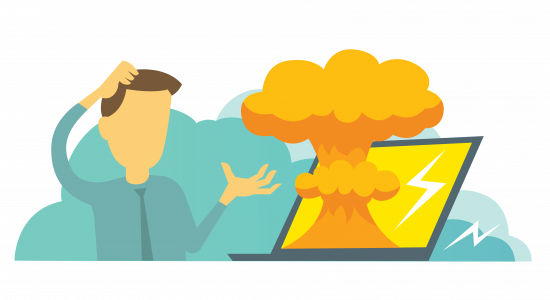There is nothing like a crisis to help us focus on important things like planning. Topics like disaster recovery suddenly become much more interesting. The Coronavirus is all over the news, and this has caused a wide range of reactions. Some of these have included things like cancellations and workers staying home. Unfortunately, all of these can cause your business to be disrupted or even ground to a halt. Granted, this is not an earthquake, flood, or other events that bring down the infrastructure we rely on. However, it is an example of why we need to plan for business continuity and disasters.
The first step in levels of preparedness is converting staff to remote work. This situation can crop up multiple times a year and without much warning. Some examples are heavy snow or similar weather, hurricanes/tornadoes, and even terror/crime events that cause a lockdown of a building or area.
Common Concerns For Disaster Recovery
There are many things we take for granted when considering a continuity plan. Thus, those functions are easy to overlook. Here are some typical business functions to consider to help you build out that list of concerns.
- Communication – Phone and other forms like email. MS Teams or Slack may be the cure for a lot of this.
- Non-digital communication – Printing and mail. This area can include essential things like invoices and payroll.
- Customer interaction – Your customers may not be impacted and still need to contact you. Do you have alternate options for face-to-face communication?
- Line of command – This concern is more about handling outages and errors. When people are not in an office, will you still be able to address and escalate issues adequately?
- Meetings – We may enjoy skipping these. However, some meetings are critical and must be maintained even in bad times (maybe more so).
- Online Access – Businesses are doing more to secure their environments. Do you have a plan that allows people to VPN into your network or access resources when not in the office?
- Grapevine – Do you have a plan for pushing communication out to everyone? This can be internal and external communication. For example, letting staff know the office is closed or canceling public events.
- Digital Access – Although similar to online access, do your employees have access to the proper version of the files they need? Do your processes include a bias towards saving daily work and placing it where it can be accessed anywhere?
- Backups and DR – Does your plan include a way for employees to back up and store data when not in the office? Your disaster recovery processes may be oriented towards office staff and network staff.
Getting Started
When you look at the above list, there might be some items that cause you discomfort. Your reaction may be to address that right away. The thing about DR and continuity planning is that we do have non-essential items in our daily business. One can ignore these items for planning purposes.
A good example is payroll processing. When you use an outside vendor, this probably becomes something you push on that vendor. Make sure they have a good plan and that will cover you.
The Cloud has helped with many of these areas. These challenges disappear as organizations move to MS Azure or Amazon AWS and use more SAAS (software as a service) options. Ok, not completely away. However, you will have a vendor that will provide you with most of what you need for your continuity or DR needs. That is just another value outsourcing can bring.
Learning More
There is a wealth of DR information on the web. You can start with a search for “disaster recovery planning” to see a long list of vendors and guides on this subject. I recommend starting with an overview such as this one. You can find examples with excellent backgrounds at places like the Gartner Group, Harvard Business Review, and Forrester. While you can hire consultants to help with your specific plans, I find it much better to go into this process with your eyes open. Of course, you can always send an email to rob@54.197.223.3 if you have questions.


Leave a Reply
You must be logged in to post a comment.